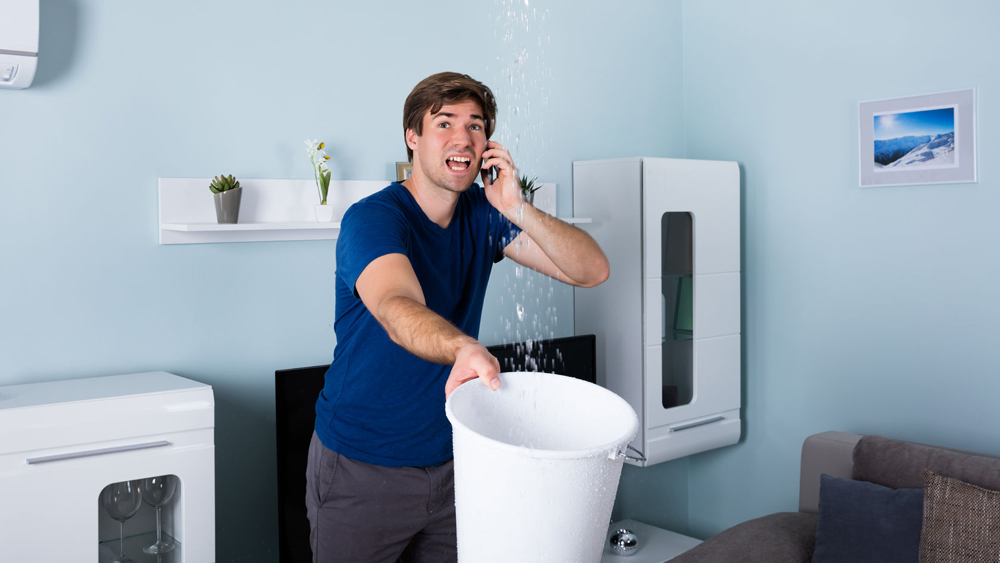Your House's Most Frequent Triggers of Leak Problems: Thorough Investigation
Your House's Most Frequent Triggers of Leak Problems: Thorough Investigation
Blog Article
The article below in relation to How Fast Water Damage Can Ruin Your Home is especially insightful. Don't skip it.

Leakages not only trigger waste of water however can additionally cause unneeded damage to your residence as well as advertise unwanted organic development. Water leakages could go undetected considering that many of the pipework in our house is hidden. By looking and understanding for daily scenarios that trigger leakages, you can secure your residence from future leakages as well as unneeded damage. Today, we will consider six leak creates that might be causing your pipes to trickle.
Encroaching roots
The majority of water leaks start outside the home instead than inside it. You might observe damp patches or sinkholes in your yard, as well as that might indicate that tree origins are invading water lines causing water to seep out.
Corroded water systems
As time goes by, your plumbing system ages and corrosion such as corrosion might start gnawing the pipelines. This may be the reason for discoloration or warping on your water pipes. This calls for an assessment with your plumber instantly. If our plumbing system is old, think about replacing the pipes since they go to a higher danger of deterioration than the newer models.
Malfunctioning Pipeline Joints
The point at which your pipelines connect is often the weakest web link in the waterline. Pipe joints can weaken in time, resulting in water leaks. Regrettably, the majority of pipeline joints are not easily visible. If you have noisy pipes that make ticking or banging sounds, particularly when the hot water is switched on, your pipe joints are probably under a lot of stress. It is advisable to have your plumber inspect your system once a year.
Immediate temperature modifications.
Severe temperature adjustments in our pipes can trigger them to broaden and also get suddenly. This expansion and also tightening might create splits in the pipes, particularly if the temperature are below freezing. It would be best if you kept an eye on how your plumbing works. The visibility of the formerly stated circumstances often shows a high threat.
Poor Water Connectors
At times, a leakage can be caused by loosened hose pipes and also pipes that supply your home appliances. In situation of a water links leak, you may notice water running straight from the supply line or pools around your devices.
Clogged Drains
Clogged drains may be bothersome and inconveniencing, yet they can in some cases wind up creating an overflow resulting in break pipes. Maintain eliminating any kind of materials that may go down your drains pipes that might obstruct them to avoid such aggravations.
All the above are sources of leaks however not all water leaks result from plumbing leakages; some leaks may come from roofing leaks. All leaks need to be repaired promptly to stay clear of water damages.
Leakages not just create waste of water however can also cause unneeded damage to your house and also promote unwanted organic development. By comprehending as well as looking for day-to-day scenarios that trigger leaks, you can safeguard your residence from future leaks and also unneeded damages. Today, we will look at 6 leak creates that might be triggering your pipes to drip.
At times, a leak can be triggered by loosened hoses and also pipelines that supply your devices. In case of a water links leakage, you might discover water running straight from the supply line or pools around your home appliances.
How To Check For Water Leak In Your Home
How To Check for Leaks
The average household's leaks can account for nearly 10,000 gallons of water wasted every year and ten percent of homes have leaks that waste 90 gallons or more per day. Common types of leaks found in the home are worn toilet flappers, dripping faucets, and other leaking valves. These types of leaks are often easy to fix, requiring only a few tools and hardware that can pay for themselves in water savings. Fixing easily corrected household water leaks can save homeowners about 10 percent on their water bills.
To check for leaks in your home, you first need to determine whether you're wasting water and then identify the source of the leak. Here are some tips for finding leaks:
Take a look at your water usage during a colder month, such as January or February. If a family of four exceeds 12,000 gallons per month, there are serious leaks.
Check your water meter before and after a two-hour period when no water is being used. If the meter changes at all, you probably have a leak.
Identify toilet leaks by placing a drop of food coloring in the toilet tank. If any color shows up in the bowl after 10 minutes, you have a leak. (Be sure to flush immediately after the experiment to avoid staining the tank.)
Examine faucet gaskets and pipe fittings for any water on the outside of the pipe to check for surface leaks.
Undetected water leaks can happen without the home or business owner even realizing. If you suspect a water leak, but not able to find the source. It is time to contact a professional water leak detection service, The Leak Doctor.
How To Find a Water Leak In Your Home
https://www.leakdoctor.com/blog/How-To-Check-For-Water-Leak-In-Your-Home_AE197.html

Hopefully you enjoyed reading our part on How to Find Water Leaks. Thanks so much for taking the time to browse our posting. Sharing is caring. Helping people is fun. We recognize the value of reading our article about Common Water Leaks In House.
Quick help? Contact. Report this page